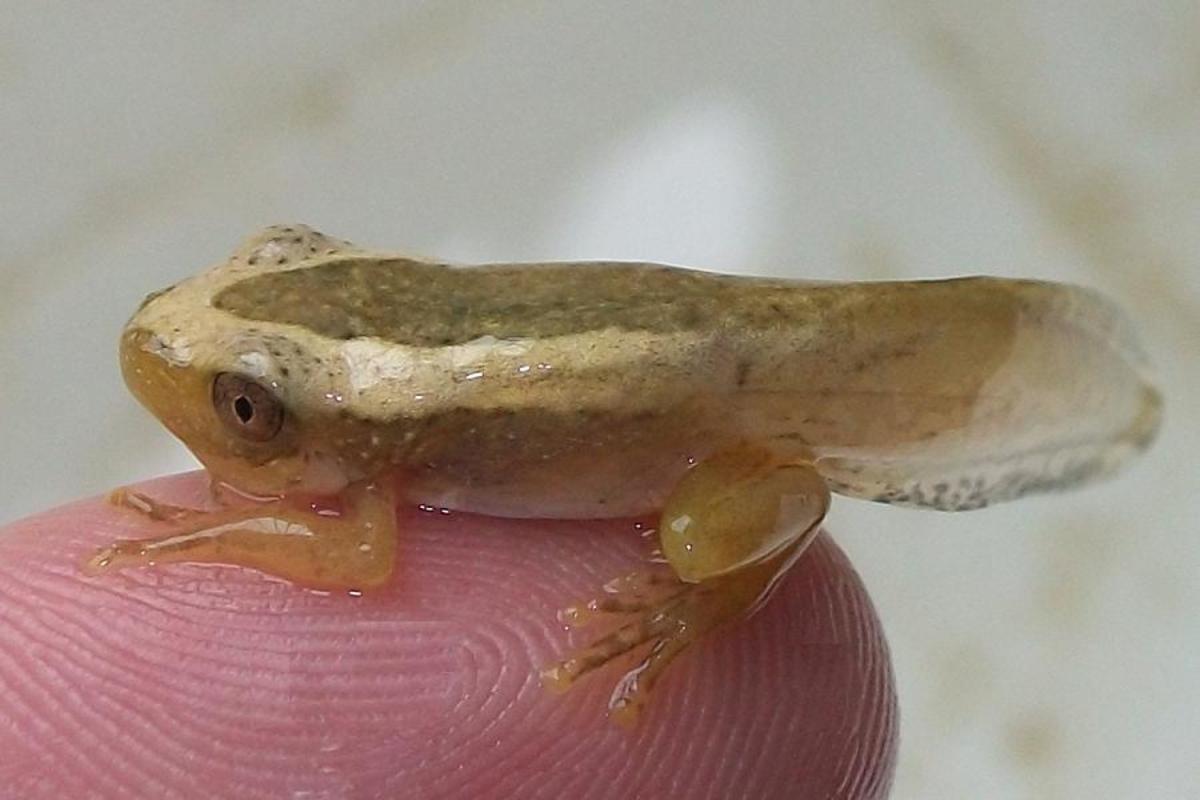
23 interesting facts about froglets
- 👁️ 301
Froglets are fascinating creatures representing an intermediate stage in the life cycle of a frog. After hatching from eggs as tadpoles, they undergo a transformation in which they develop legs, lose their tails, and become froglets before maturing into adult frogs. This metamorphosis is a complex process regulated by hormones and environmental factors. The term “froglet” refers specifically to this transitional stage where the creature is no longer a tadpole but not yet a fully developed frog. Here’s a captivating exploration of 23 facts about froglets.
- Froglets are part of the amphibian family, which means they can live both in water and on land.
- During metamorphosis, the froglet’s tail is reabsorbed into the body, providing essential nutrients.
- Froglets develop hind legs first, followed by the front legs.
- The lungs of froglets develop as they transition from tadpole, allowing them to breathe air.
- Froglets’ diet starts to change from herbivorous as tadpoles to carnivorous as they develop.
- The time taken for a tadpole to develop into a froglet can vary between species, usually taking several weeks.
- The size of a froglet can vary widely depending on the species, ranging from 1 to 10 centimetres.
- Environmental factors such as temperature and nutrition can influence the rate of a tadpole’s metamorphosis into a froglet.
- Many froglets still have remnants of their tadpole tail, which continue to shrink as they grow.
- Froglets are incredibly vulnerable to predators such as birds, fish, and reptiles.
- Some species of froglets can produce sounds or calls, although not as loud or distinct as adult frogs.
- Certain species of froglets exhibit vibrant colours that can signal toxicity to potential predators.
- The eyes of froglets are more advanced than tadpoles and adapted for vision outside the water.
- Many froglets begin life in freshwater habitats like ponds, rivers, and marshes.
- Froglets continue to undergo changes in their skin, bones, and muscles as they transition to adulthood.
- Parental care in froglets is rare, but in some species, parents may protect or carry their young.
- Froglets often stay near water until they develop further, to retain access to a moist environment.
- Many froglets face threats from pollution, habitat loss, and climate change.
- Froglets exhibit unique behaviours, such as specific movement patterns to escape predators.
- Some cultures consider the appearance of froglets as a sign of coming rain or change in weather.
- Froglets from different species may display varying colours, patterns, and physical features.
- The study of froglets and their development has provided valuable insights into developmental biology.
- Froglets play a significant role in their ecosystems, serving as both predators and prey.
Froglets are a captivating stage in the life cycle of frogs, representing the incredible transformation from aquatic tadpoles to terrestrial adults. Their metamorphosis is a marvel of biology and has intrigued scientists for centuries. These small creatures not only fascinate us with their development but also play a vital role in their ecosystems, serving as a symbol of adaptability and change. The more we learn about froglets, the more we realise how intricate and delicate the balance of nature truly is.
Froglets are fascinating creatures representing an intermediate stage in the life cycle of a frog. After hatching from eggs as tadpoles, they undergo a transformation in which they develop legs, lose their tails, and become froglets before maturing into adult frogs. This metamorphosis is a complex process regulated by hormones…